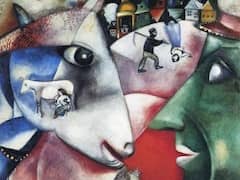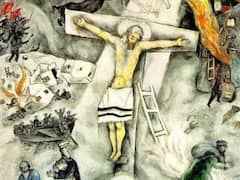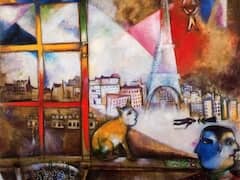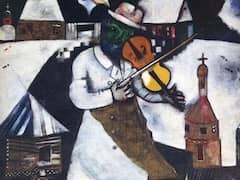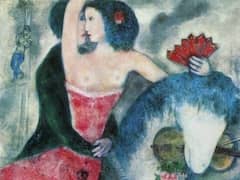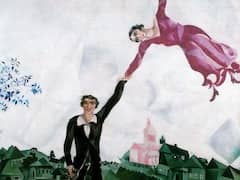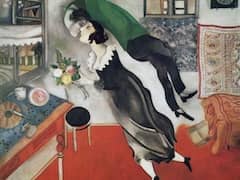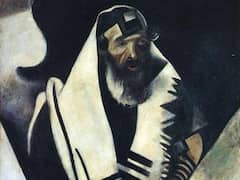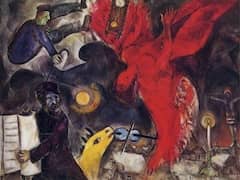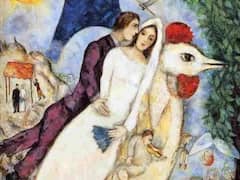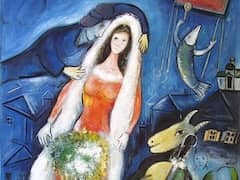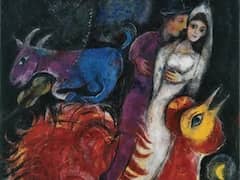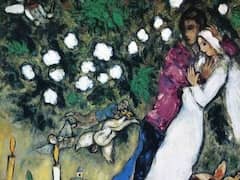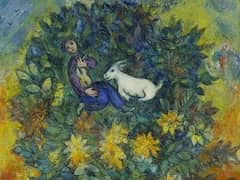War, 1964 - by Marc Chagall

In 1941, as the Nazis became a greater threat, Chagall finally moved to New York City with his family, driving him further away from the village existence he knew and loved. Religious imagery, mainly Jesus' crucifixion, reappeared constantly throughout Chagall's paintings, perhaps communicating his suffering. Bridging the space between poetry, politics and spirituality, Chagall creates rich visual tapestries, alive with tales of love, loss, faith and war.
Thoughts of flight and exile re-appear in the painting War. A wretched and drastically overloaded cart is slowly putting the burning city behind it. A man is plodding along behind the cart, a sack over his shoulder, saving his worldly goods from the flames. Most of the people here can only just save their lives, though, and cling to each other in confused despair. The people and animals that have remained in the city are helplessly at the mercy of the all-consuming inferno. Chagall feelingly portrays the sufferings people underwent during the war, and by adding to this scenario of cruelty and violence a crucifixion scene in the upper right he elevates the victims of the war to the status of martyrs, who - though themselves guiltless - are forced to bear the burden of expiation.

